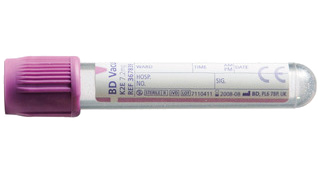@article{pmid38277988,
title = {PCYT2 deficiency in Saarlooswolfdogs with progressive retinal, central, and peripheral neurodegeneration},
author = {Matthias Christen and Anna Oevermann and Stefan Rupp and Frédéric M Vaz and Eric J M Wever and Barbara K Braus and Vidhya Jagannathan and Alexandra Kehl and Marjo K Hytönen and Hannes Lohi and Tosso Leeb},
doi = {10.1016/j.ymgme.2024.108149},
issn = {1096-7206},
year = {2024},
date = {2024-03-01},
urldate = {2024-03-01},
journal = {Mol Genet Metab},
volume = {141},
number = {3},
pages = {108149},
abstract = {We investigated a syndromic disease comprising blindness and neurodegeneration in 11 Saarlooswolfdogs. Clinical signs involved early adult onset retinal degeneration and adult-onset neurological deficits including gait abnormalities, hind limb weakness, tremors, ataxia, cognitive decline and behavioral changes such as aggression towards the owner. Histopathology in one affected dog demonstrated cataract, retinal degeneration, central and peripheral axonal degeneration, and severe astroglial hypertrophy and hyperplasia in the central nervous system. Pedigrees indicated autosomal recessive inheritance. We mapped the suspected genetic defect to a 15 Mb critical interval by combined linkage and autozygosity analysis. Whole genome sequencing revealed a private homozygous missense variant, PCYT2:c.4A>G, predicted to change the second amino acid of the encoded ethanolamine-phosphate cytidylyltransferase 2, XP_038402224.1:(p.Ile2Val). Genotyping of additional Saarlooswolfdogs confirmed the homozygous genotype in all eleven affected dogs and demonstrated an allele frequency of 9.9% in the population. This experiment also identified three additional homozygous mutant young dogs without overt clinical signs. Subsequent examination of one of these dogs revealed early-stage progressive retinal atrophy (PRA) and expansion of subarachnoid CSF spaces in MRI. Dogs homozygous for the pathogenic variant showed ether lipid accumulation, confirming a functional PCYT2 deficiency. The clinical and metabolic phenotype in affected dogs shows some parallels with human patients, in whom PCYT2 variants lead to a rare form of spastic paraplegia or axonal motor and sensory polyneuropathy. Our results demonstrate that PCYT2:c.4A>G in dogs cause PCYT2 deficiency. This canine model with histopathologically documented retinal, central, and peripheral neurodegeneration further deepens the knowledge of PCYT2 deficiency.},
keywords = {},
pubstate = {published},
tppubtype = {article}
}



